
 |  |
Establishing Requirement
Introduction
We will be testing our application on our stakeholders which are tourists, researchers, nature enthusiasts, and students who are pursuing courses related to flora and fauna using three application: Animal Voice Recognition, Google Lens, and BookDoc.
Each of these application have unique features to test. For the Animal Voice Recognition app, we will test its capability to recognise the species by their voice. In Google Lens, we will test the real-time scanning feature for identifying the animal species. Lastly, in BookDoc, we will test the process of redeeming points and claiming rewards.
Task Analysis
HTA 1: Recognising the Species by Its Voice
User 1: Tourist
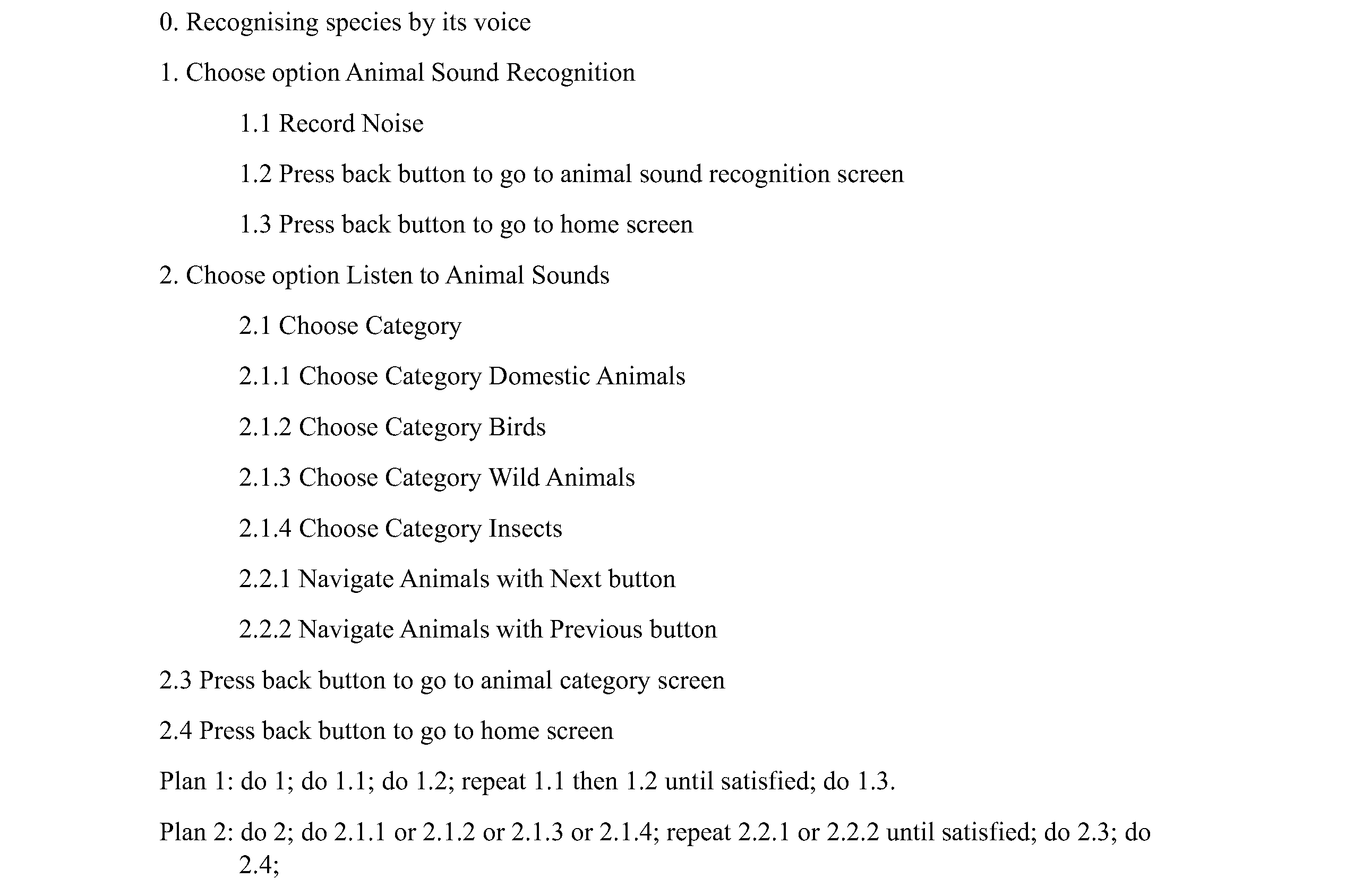
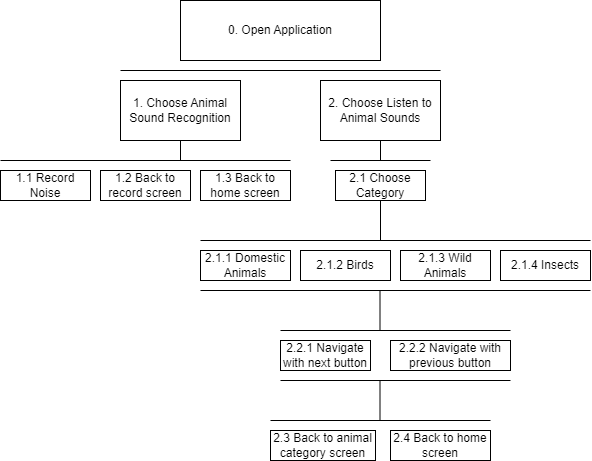
User 2: Researchers


User 3: Students who is currently pursuing in the course related to flora and fauna


Findings from HTA1
The given Hierarchical Task Analysis (HTA) for the Animal Voice Recognition app depicts user interactions and application routes. First off, the textual and graphical representation is the same across all target users therefore these two represents all of the different target users. Upon opening the program, users are offered with two primary options: detect animal noises or listen to preconfigured animal sounds. For people who want to recognize animal sounds, the process comprises recording noises, examining them, and possibly recording more if necessary before returning to the home screen. Users who want to hear predefined animal sounds, on the other hand, can select from a variety of categories, including Domestic Animals, Birds, Wild Animals, and Insects. Within each category, users can travel among different animal noises using next and previous buttons, with the option of returning to the category selection or the home screen at any point. Overall, this analysis highlights the app’s user-friendly design, which caters to users’ diverse needs for recording and listening to animal sounds.
HTA 2: Identify Species using Google Lens
User 1: Tourist
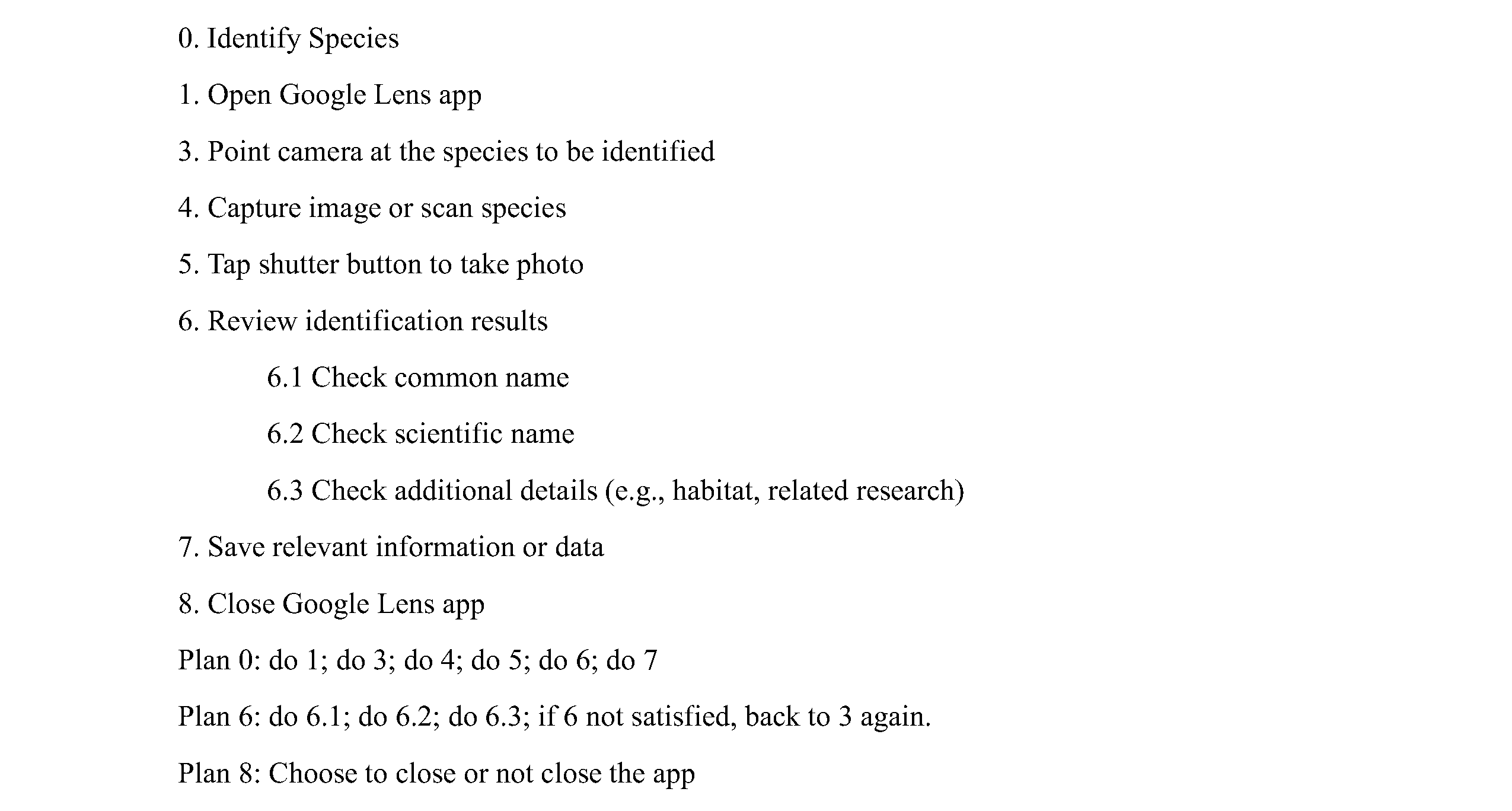
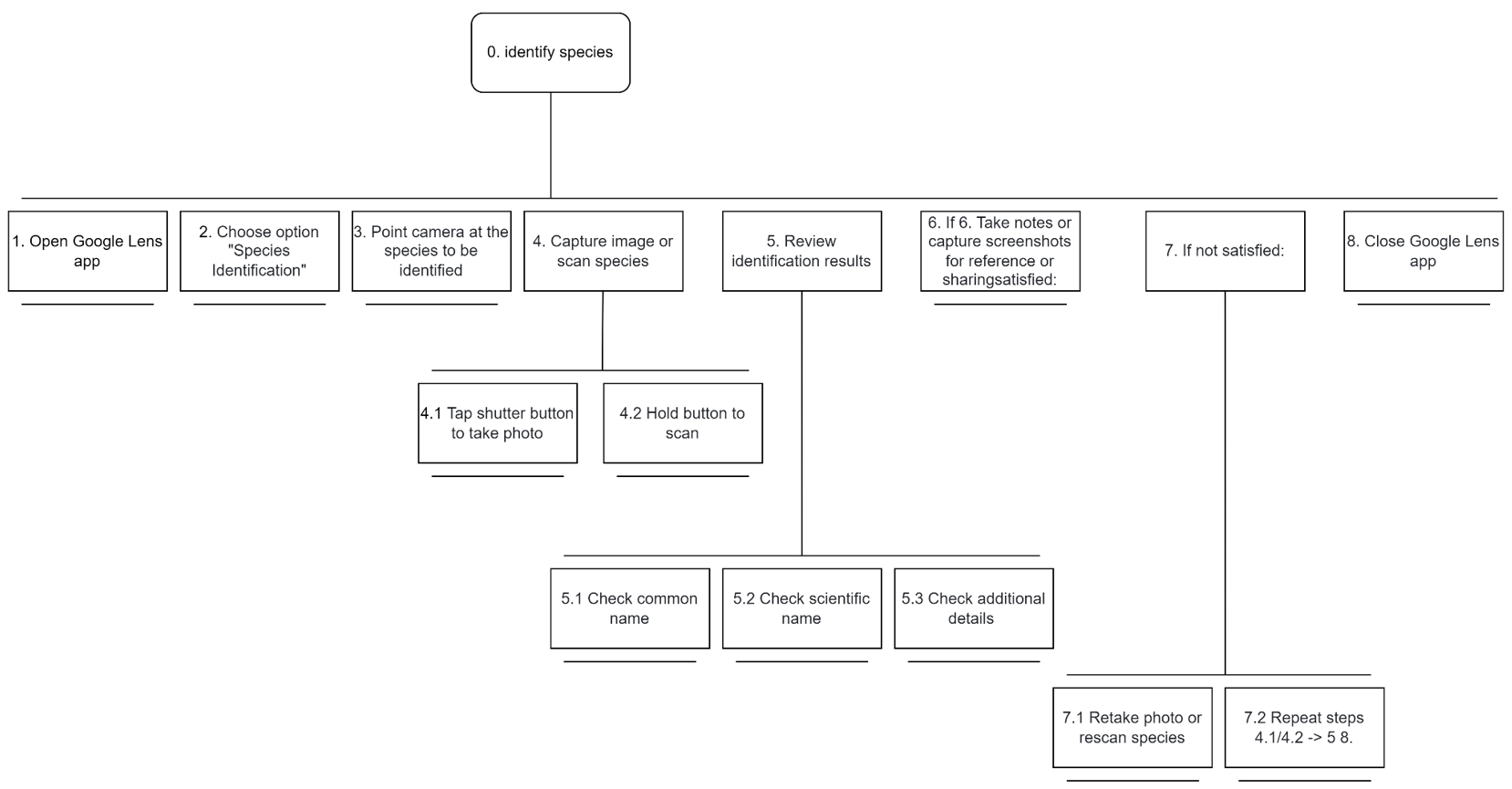
User 2: Researchers


User 3: Students who is currently pursuing in the course related to flora and fauna

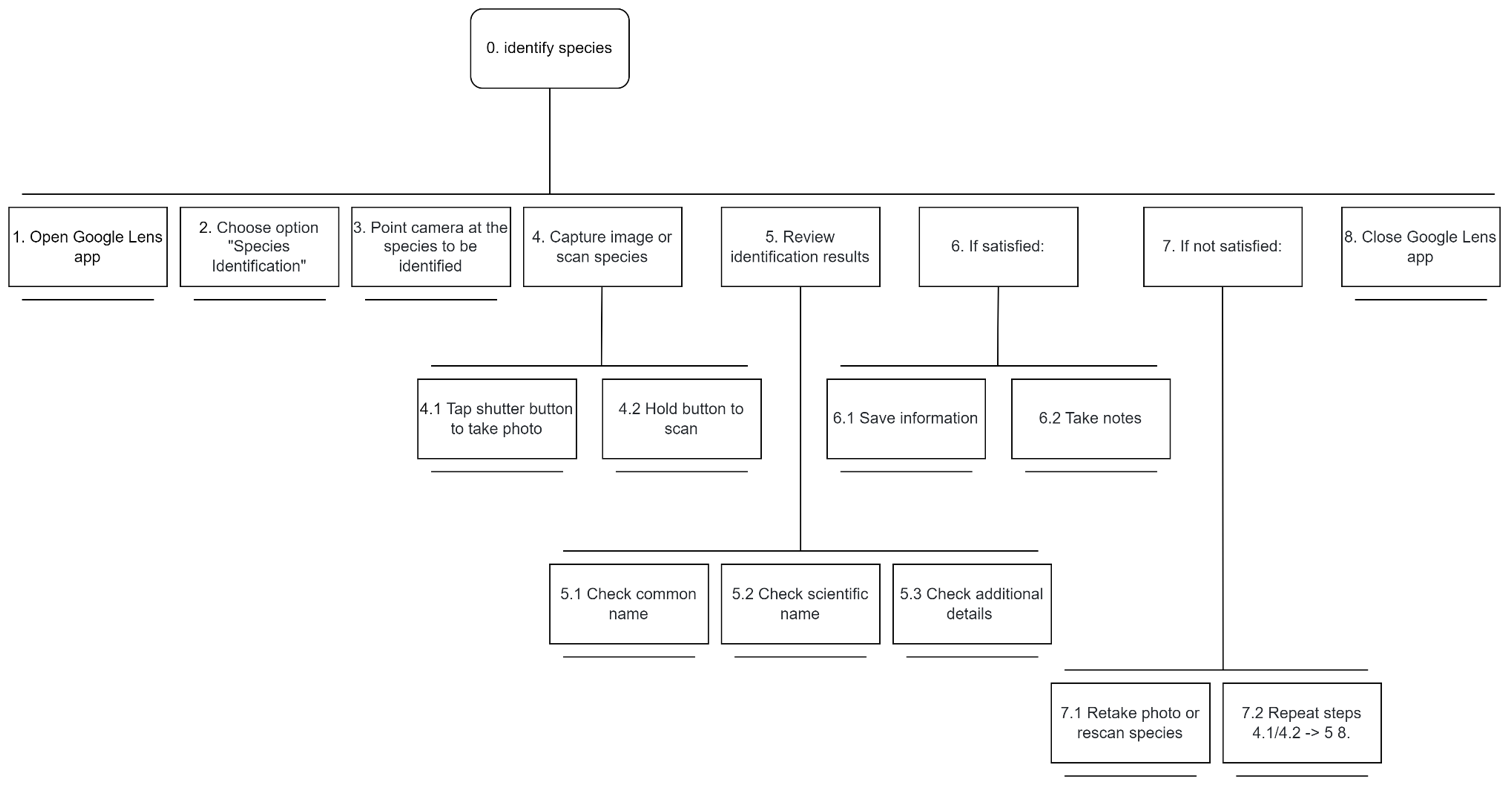
Findings from HTA2
Students use Google Lens for educational purposes and often need multiple attempts for accurate identification, suggesting a need for integrated educational resources. Researchers require high accuracy and detailed information for scientific identification and data comparison, indicating the need for habitat info, scientific links, and advanced analysis tools. Tourists use the app for quick species identification during travels but face challenges with outdoor conditions affecting image quality; tips for better images, offline capabilities, and sharing options would be beneficial. Overall, the app is intuitive, but adding educational and research tools and feedback mechanisms would enhance user satisfaction.
HTA 3: Redeem the points and claim rewards using BookDoc
User 1: Tourist
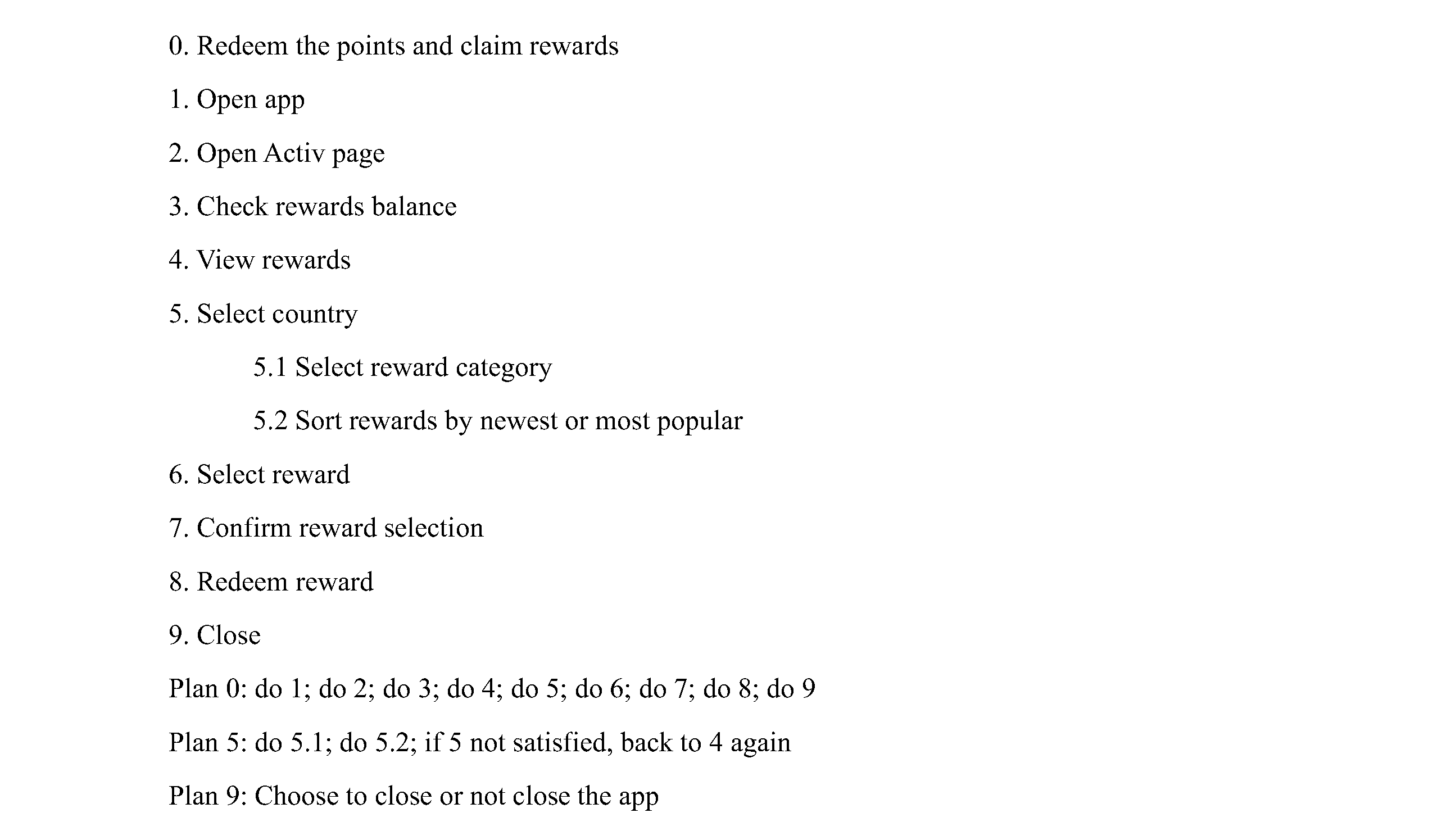

User 2: Researchers

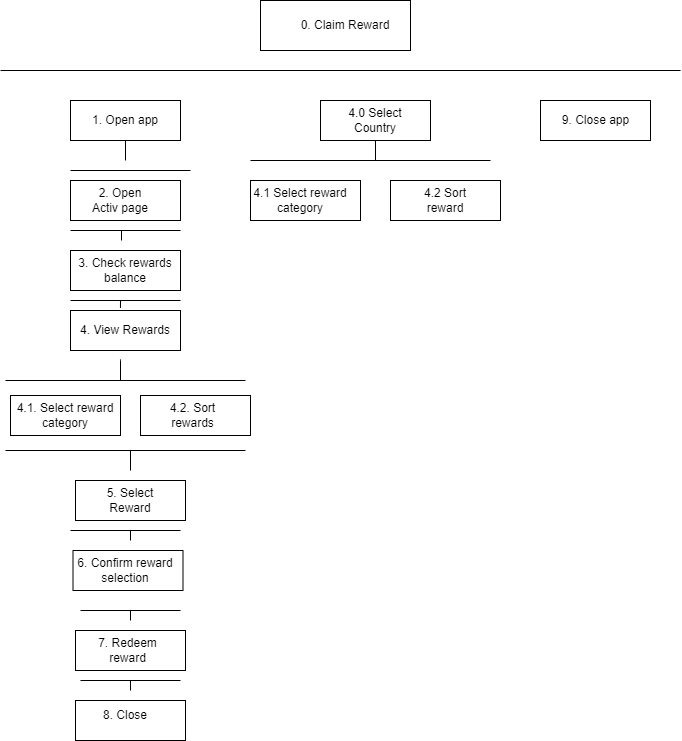
User 3: Students who is currently pursuing in the course related to flora and fauna

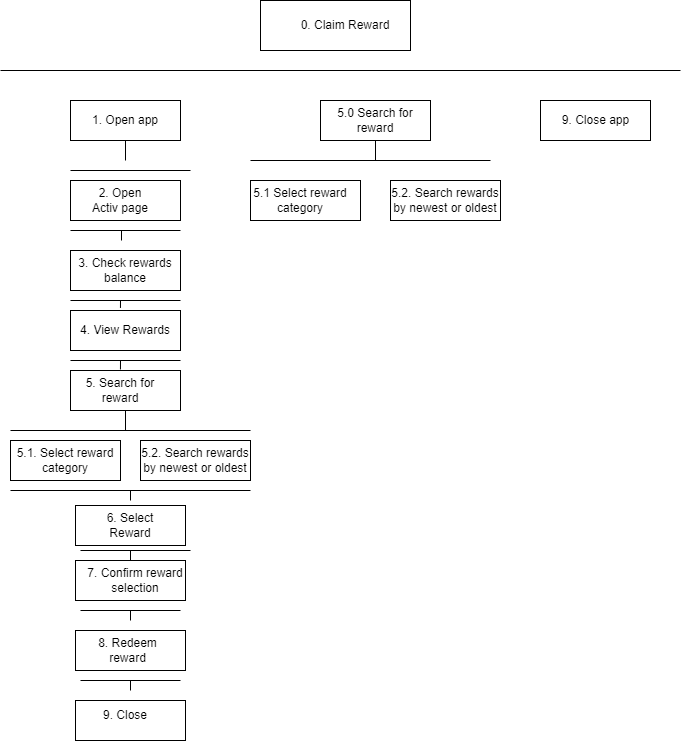
Findings from HTA3
The Hierarchical Task Analysis (HTA) for redeeming points and claiming rewards through an app involves a detailed series of steps. Users start by opening the app and navigating to the Activ page to check their rewards balance. They can then view available rewards and use the search function to find specific rewards, either by category or by sorting by the newest or most popular options. Once a suitable reward is found, users select and confirm their choice before redeeming it. The final step is closing the app. This comprehensive process ensures that users can efficiently manage their points and claim rewards, providing a seamless and satisfying experience.
Design Requirements
From the existing applications that we have done researched upon, below is a list of design requirements that we will be working on for our own version of system:
1. Using voice recognition system to recognise the voice of fauna
- Users can just use the built-in voice recognition system of the app to record their voice for species identification.
- Provide alternate pathway for users to identify the species of animal.
- Make the process of identification of species become varies.
2. Real-time scanning to identify the species of the flora and fauna in real time
- User can just scan the flora and fauna and the app will provide its species and detailed information within second, instead of capturing its images and send to the app for identification.
- Can provide immediate results for identification of the species for the users.
- Can save time for waiting the results.
3. Create the reward system to redeem the points and claim rewards
- The app will provide a balance point every time the user uses the app to identify the species of flora and fauna.
- After enough balance point required, the rewards will be provided by letting users chooses one of the equipment from the lists for free.
- To motivate old users to frequently use the app and attract free users to use the app.
Through users’ thought processes, we are able to clearly identify each step the users are taking to complete the designated task. From there, we can notice tiny pauses by the users when trying to do the task. This is where we can find issues of UI/UX design which are described above.
User Analysis
Proposed Tasks
- Recognising the species by its voice
- Scan to identify the species of the animal in real time
- Redeem the points and claim rewards
Persona 1: Brendan :: Tourist
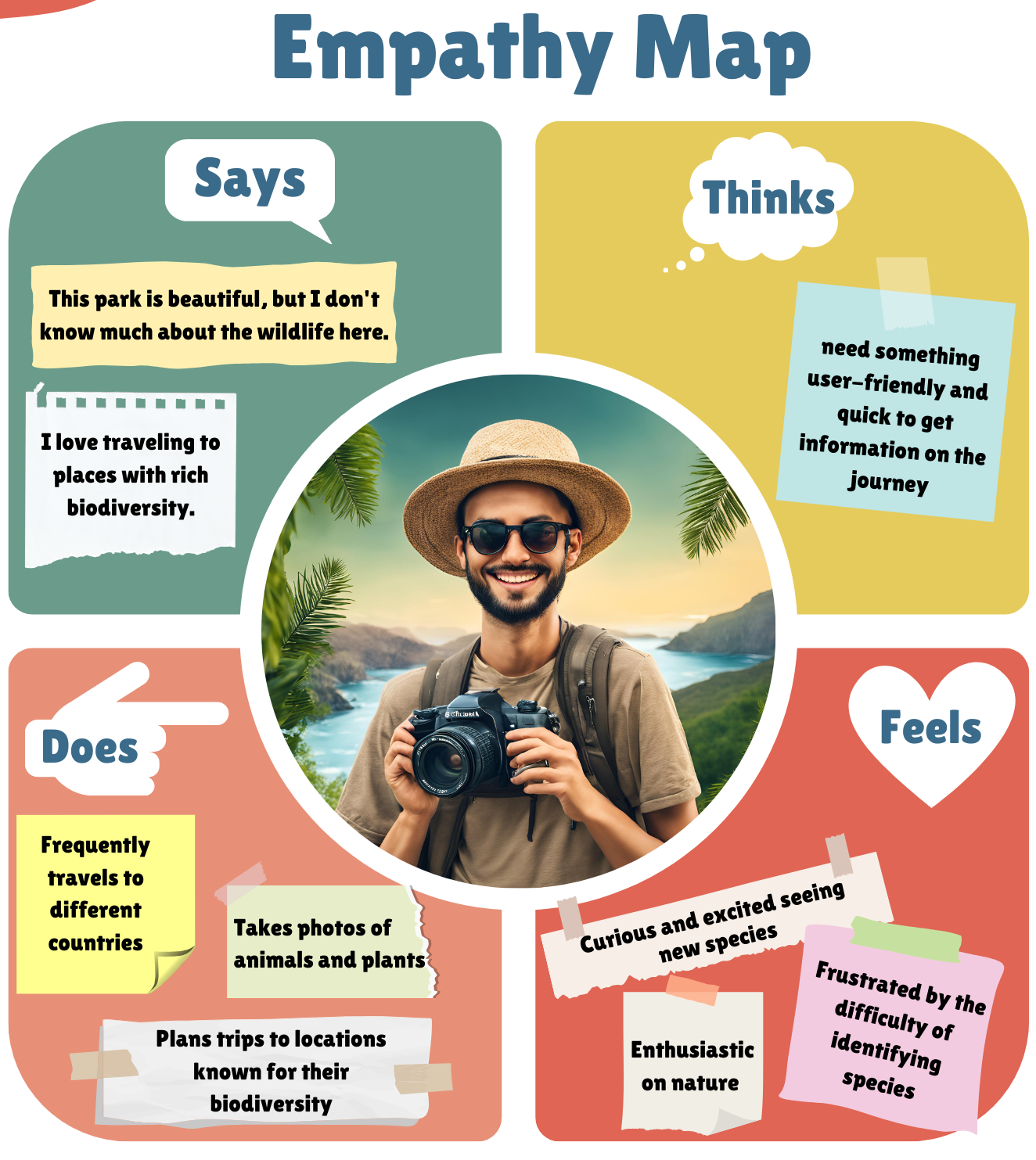 |  |
Brendan is a 40 year old travel enthusiast from Singapore. He loves travelling, especially to places that are rich in natural beauty and wildlife. He has a strong interest in identifying and learning about the various species he encounters while he is travelling. Brendan relies on his smartphone for navigation, taking photos, and other travel-related tasks. However, he often feels frustrated because he can’t accurately identify the animals and plants he sees, because many of them having small differences that look like the same.
Brendan wishes for an app that can help him quickly and accurately identify species. He needs a user-friendly application that provides educational information about the wildlife around him. His curiosity on adventure drive him to constantly seek new knowledge, but the limitations of current apps, such as slow identification processes, make his travel experiences less enjoyable. A reliable app that solves these issues would greatly enhance his trips and deepen his understanding and appreciation of nature.
Persona 2: Dr Cheng :: Animal Researcher
.png) |  |
Dr Cheng is a dedicated and passionate 40-year-old fauna researcher from Singapore. His work involves not only researching species but also continuously updating their status to ensure accurate and up-to-date information. Despite of his expertise, he faces challenges in keeping track on the current status of the species he studies. Besides that, he also often struggles to promptly identify and record sudden changes in their populations.
Dr Cheng hopes that he has an app that can not only help him to show the detailed information of species he is researching, it can also show the current status of the species in real time. At the same time, he can also update the status of the species in real time without any difficulties. This app not only can help Dr Cheng to improved his research, it can also help him to identify any current change of status for the species he is researching.
Persona 3: Elijah :: Student pursuing courses related to flora and fauna
 | 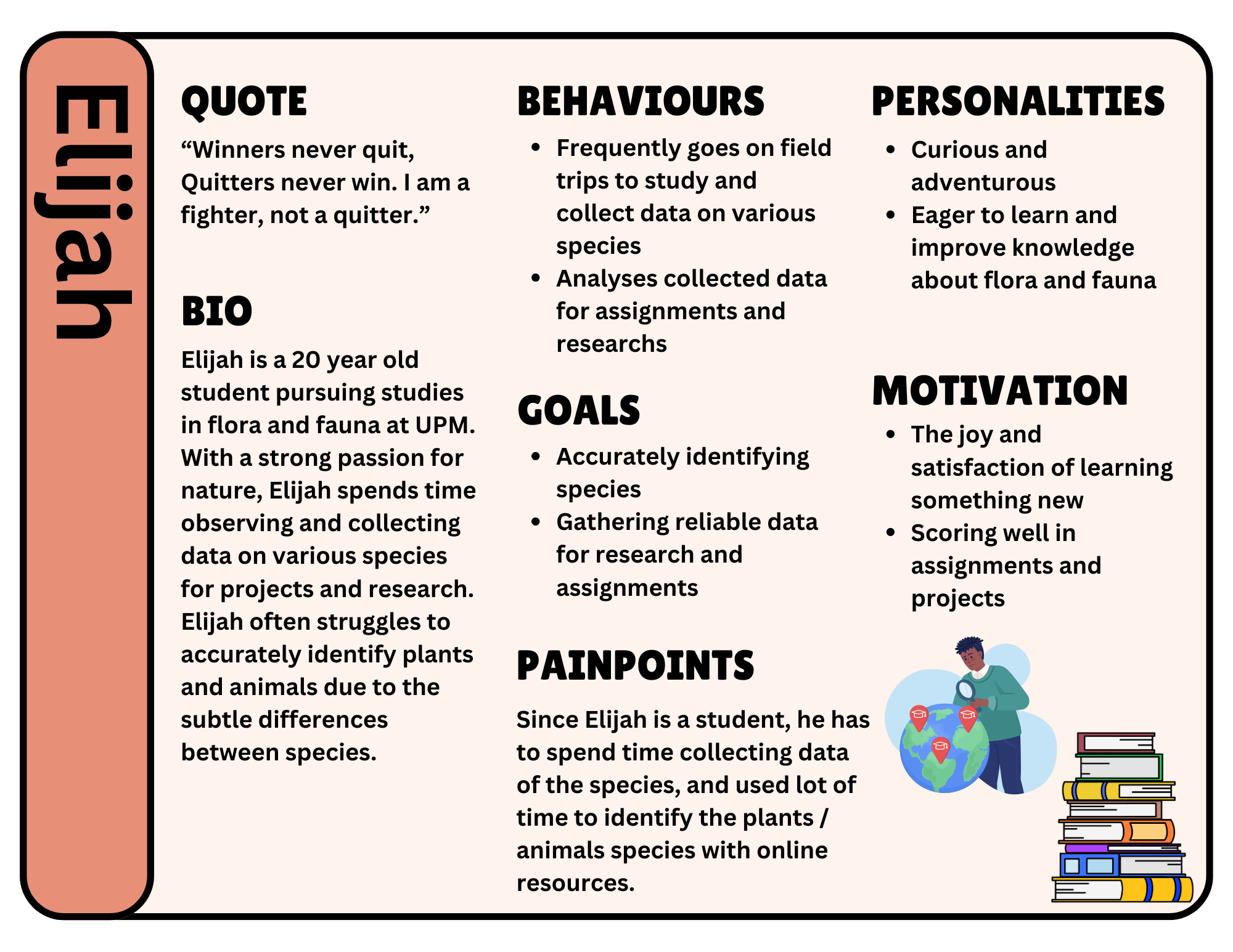 |
Elijah is a 20 year old student passionate about studying plants and animals. He spends a lot of time gathering data for projects and research. Elijah uses a smartphone to take photo and search online to identify species but he often finds it challenging because many species look very similar. It causes the data colleting process slow and frustrating.
However, Elijah is eager to learn and improve his knowledge of nature. He is always looking for reliable tools to help with species identification and data collection. An app which is easy to user, can provide quick and accurate detailed species identification would make Elijah’s studies more efficient and enjoyable. It could also help Elijah succeed in his academic performance.
Scenarios
Task 1 - Recognising the species by its voice
Brendan is hiking at Gunung Pulai in the morning. He is enjoying the sounds of nature around him. However, as he walks along a forest trail, he hears an unfamiliar bird voice and wants to know more about it. To feed his curiosity, he takes out his smartphone and opens the Animal Voice Recognition app. He taps the record button and captures the bird’s voice. Within seconds, the app identifies the bird species and provides detailed information about it, such as its name, habitat, and interesting facts. Brendan feels excited and satisfied as he learns more about the bird and adds it to his list of species he has encountered.
Then, Brendan continues his hike, he hears other animal voice. He hears the rustling of leaves, which he suspects is a squirrel. Each time he hears a new sound, he uses the app to identify and learn about these animals. The app could quickly identify the sounds and provides information about each species. By the end of his hike, Brendan has identified several new species that he never discovered before during the trip. He feels a sense of accomplishment and satisfaction. The Animal Voice Recognition app has made his hiking experience more educational and enjoyable. Brendan can’t wait to share his discoveries with his friends and family when he returns home. He is looking forward to his next trip to explore more wildlife and learn about new species.
Task 2 - Scan to identify the species of the animal in real time
Dr. Cheng was at the Amazon rainforest in Brazil to discover new species in this diverse ecosystem. As he ventured deeper, he spotted an unknown colorful bird on a low branch. He quickly used his smartphone’s real-time scanning app to identify it. Within seconds, it was identified as a Harpy Eagle, one of the largest and most powerful raptors. Then, Dr. Cheng recorded its location and behavior, then instantly updating the data recorded into the app. This instant identification and updating not only confirmed the eagle’s presence, but also provided important data for its existance in the forest for future conservation.
Continuing his journey, Dr. Cheng saw a small, unfamiliar mammal on a branch above him. He scanned it with the app and found it was a Pygmy Marmoset, the world’s smallest monkey. The app’s real-time identification allowed him to document this rare sighting, providing crucial information for his research. Dr. Cheng was suprised, knowing this innovative tool was helping protect the Amazon’s most vulnerable species.
Task 3 - Redeem the points and claim rewards
Elijah was on a trip to collect data of flora and fauna in Semenggoh, Sarawak. He use the scanning app that could instantly identify species to help him on his research trip. As a student that studying about flora and fauna, this app could bring a huge support for him on this trip. Each time he scanned a plant or animal, the app provided exact identification and detailed information, helping him solve identification problems. Besides that, when he collected data during his field trips, he also earned redeemable points through the app’s loyalty program, which could be used to get better research tools.
When Elijah collected more data, his points balance grew. When he earned enough points, he able to receive a reward of choosing new equipment from the list of reward. The new equipment that he desparate want to get is a high quality camera lens, which can help him to capture detailed photos of flora and fauna. Because of the reward system, Elijah was motivated to use it to collect as many data of the species as possible. At the same time, the knowledges of the species of each flora and fauna he founded will be improved, making this research trip very rewardable. On the end of the trip, Elijah was on top of the world because this innovative technology not only able to reward with the equipment, but can also advanced his studies further to help him succeed on his academic performance.